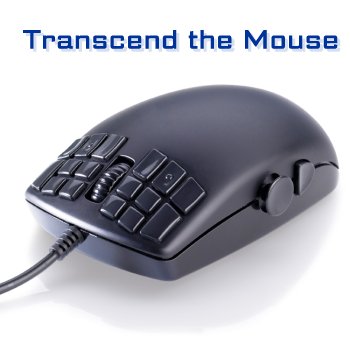Some interfaces are designed for purpose. One of them is certainly (yet another) computer mouse with a lot of buttons – the WarMause. When I read the news about it on Monday (28th) and I had to see this thing. I can imagine how this mouse could be used in a CAD software or computer games (I’d actually rather use designed input methods for a game rather then multiple purpose mouse). But I don’t see its value in a day to day work (like reading and answering emails or writing a letter or even browsing the web). On the other hand Douglas Engelbart envisioned that we will have a computer mouse in one hand and a 5 button keyset in the other hand for everyday use which is something similar to multibutton mouse.
This mouse has so far 90 (!!!) modes (listed as one of main advantages of this product). To remember all these can be a challenge and can result in a huge cognitive effort. Besides there are "only" 20 buttons (which I can see) and a wheel. I would probably use a few buttons but the rest would just be unused.

One such example is a microwave I have at home. It has 20 buttons and it does miracles (probably more than 100 modes). But I only use one button for everything. It’s a predefined "warm a cup of X" button which lasts 25 seconds. If I want to warm up a plate of soup I just press it twice (50 seconds) or three times (1:15) and so on. If I want to warm up a piece of pizza I just stay there and stop the microwave after 10 or 15 seconds. Really simple. And I bet other people do something similar.
But we also learn interfaces "by heart". For example I never look at the car radio and I know probably half of (15) buttons’ positions and their functions. The rest of buttons I simply don’t use. Or a TV remote controller. How many of us use it without looking at it? But do we use all buttons? Probably not. I’d guess I use 2/3 of them.
The question is where to draw a limit. While industry produces new toys/appliances/machines with millions of functions, and for as long as people are going to buy these just because a functions list is really long, we will have poorly designed interfaces. Which means more buttons with even more modes and not that designers did not put effort in the design – I bought my microwave only because its design (shape, colour) was superb and I bought my TV not based on a remote controller. How many times do we hear people praise their Mhz/GB/PPi/etc and they don’t even know what these mean?
PS: another such mouse is Razer Naga
